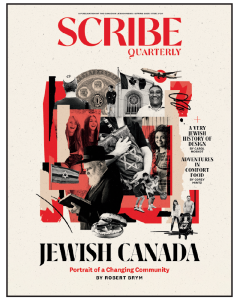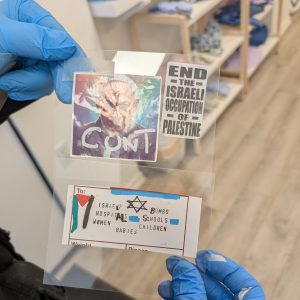In honour of International Holocaust Remembrance Day on Jan. 27, students in Saskatchewan, Nova Scotia and Quebec took part in a twinning program that educated them about Jewish children who were killed during the Holocaust.
Through the Canadian Society for Yad Vashem’s Twinning to Remember program, students were paired with a child victim of the Holocaust as a way of forging a connection between two identities.
“I thought this was a fantastic opportunity for my students to celebrate the life of the victims from the Holocaust,” said Gina Lavine, a teacher at Collège Laflèche, a CEGEP school in Trois-Rivières, and a 2013 graduate of Yad Vashem’s three-week educators seminar in Jerusalem.
READ: HOW THOUSANDS OF DANISH JEWS WERE SAVED FROM NAZI PERSECUTION
More than 200 educators have been sponsored by the Canadian Society for Yad Vashem to take part in the course, which trains them to teach about the Shoah.
“When I told one of my students, ‘You’re going to be twinned with a victim of the Holocaust,’ he said, ‘Well, what’s that?’” Lavine recalled. “A lot of them didn’t even know what the Holocaust was. They had to do research on the Holocaust first to figure out what it was. They had not learned it. It’s not in their curriculum.”
Lavine, a Manitoba native, thinks she may be the only Jew in Trois-Rivières. “That’s why for me it is so important to take on this mission to educate them about the Holocaust.”
Larry Miculcik, a social studies and history teacher at the William Derby School in Strasbourg, Sask., said he never met a Jewish person until he went to university.
“I’m from a very small, rural community… I knew nothing about what it meant to be Jewish, and the best immersion into that was when I took a March of the Living trip for educators in 2010,” he said.
Two years later, he took part in Yad Vashem’s three-week program, and with the lessons he learned, he implemented the twinning program with the help of his fellow teachers. He said students learned about the origins of the Shoah and the rise and fall of the Nazis. “We covered what it means to be anti-Semitic and how Israel was created after World War II and that the Jewish People created a nation of their own after the war.”
He said he’d been working with teachers of younger grades, from grades 5 to 9, to introduce the subject matter to them.
Each student was given a profile of a child along with a photo, and they were asked to access the Central Database of Shoah Victims’ Names to conduct research about who they were. The students then created a name tag to be worn on Holocaust Remembrance Day, and a larger photo of the child victims they researched was put up in the school hallways.
“It’s a reminder to us that these were young people whose potential was never fully realized,” Miculcik said, adding that this helps humanize numbers that are hard to fathom.
He said the project elicited many questions from the kids about human rights, “questions that I couldn’t even answer, like, how was this possible? That’s the big question, of course.”
Lavine said we often hear testimonies of those who survived, but this was a chance to learn about those who didn’t. “No one celebrates their lives. We talk about the survivors, but we don’t talk about those who passed away, and I wanted to give a face to their name and make a connection to my students and the young people who passed away in the Holocaust,” Lavine said.
READ: CANADIAN HOLOCAUST DOC ABOUT CLAUDE LANZMANN UP FOR AN OSCAR
“It was a very moving experience. I had students in tears because the way I worked, it was not just about reading a name and talking about a person.”
Her students could choose to create a collage about the victim’s life, write a poem or reflection, or write and present a monologue. “The authors of the monologues broke down in tears as they told their stories, because they felt the pain in the story.”






